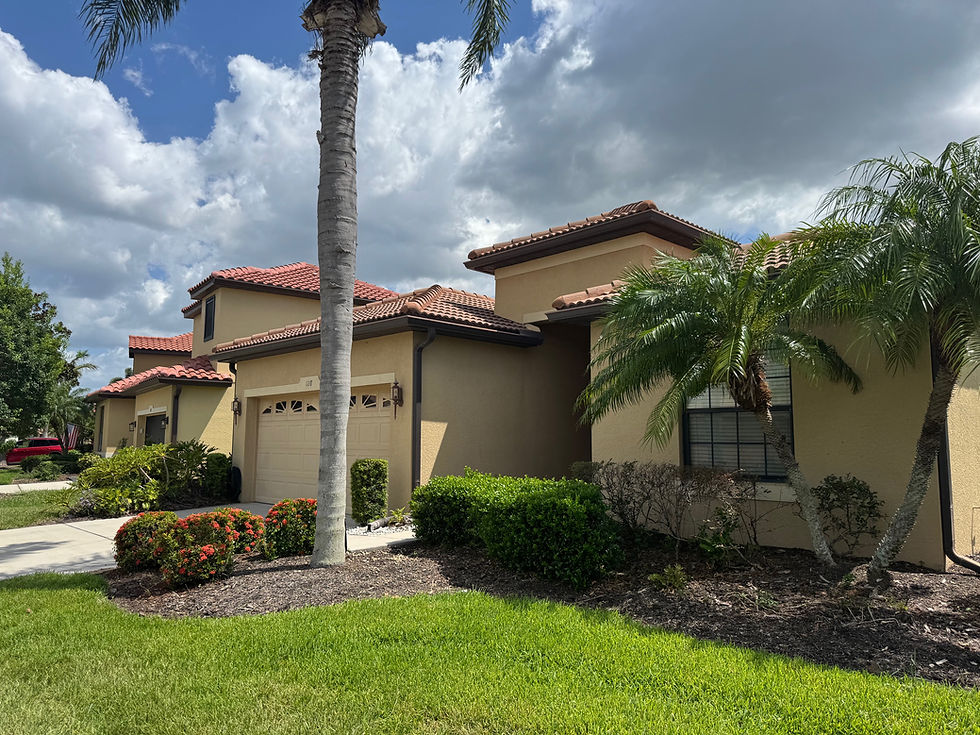The Hidden Hazards of Clay Pipes: What Homebuyers Need to Know
- Sandra Cantu

- Sep 10, 2023
- 2 min read

When you're on the hunt for your dream home in Tampa, there's a lot to consider. Location, layout, and price are all crucial factors, but there's one often overlooked detail that could make or break your homeownership experience: the type of pipes lurking beneath the house. Specifically, we're talking about clay pipes. In this blog, we'll explore why it's vital for prospective homeowners to ask the question, "Does the home have clay pipes?" and how this seemingly innocuous detail can impact your wallet and peace of mind.
The Clay Pipe Conundrum:
For many decades, clay pipes were the go-to choice for plumbing in thousands of Tampa homes. While they might have served their purpose in the past, they come with a set of unique challenges that can turn your homeownership dream into a costly nightmare. So, why should you be concerned about clay pipes?
The Costly Journey of Pipe Replacement:
One of the most significant issues with clay pipes is that they eventually wear out and require replacement. This isn't a simple fix. When replacing clay pipes with more modern PVC pipes, the plumber often needs to dig beneath your house, causing significant disruption and expense. Not only do you have to pay for the removal and replacement of the clay pipes, but you'll also be faced with the cost of a complete remodel.
Furthermore, in times of rising prices like this inflation period, there's also the strain it puts on a family both emotionally and financially. This unexpected expense can add stress to an already challenging journey for new homeowners.
The Remodeling Dilemma:
The extent of the remodel can vary, but it often includes renovating the kitchen, replacing flooring throughout the home, and updating bathrooms. These costs can fluctuate depending on the materials and labor involved. Some homeowners opt for a cheaper solution by having the pipes placed in the crawl space attic, where your HVAC air handler and personal storage may be located. However, this decision raises another important question: do you want sewage PVC pipes running through your attic?
Personal Experience Matters:
It's not just about the financial burden. Clay pipes come with other significant drawbacks. My own personal experience in Hudson Valley, New York, serves as a cautionary tale. Clay pipes caused repeated blockages and costly visits from the local plumber. It was only a matter of time before the pipes collapsed completely. Replacing them early on would have saved me hundreds of dollars and countless headaches.
Clay vs. PVC: The Technical Differences:
Understanding the technical differences between clay and PVC pipes is essential. Clay pipes are heavy and prone to root intrusions due to their joints, while PVC pipes are lightweight and seamless. Clay pipes are sturdy under normal conditions but susceptible to cracking or shattering from impacts or ground movements, leading to leaks and potential drainage system collapse.
Conclusion: As you embark on your journey to homeownership in Tampa, don't underestimate the importance of knowing what type of pipes lie beneath your potential new home. The presence of clay pipes can lead to unexpected expenses and plumbing headaches. Don't hesitate to ask questions and seek guidance from experts like Rescue Realty, who specialize in purchasing distressed homes and can provide valuable insights to protect your investment and your peace of mind.




Comments